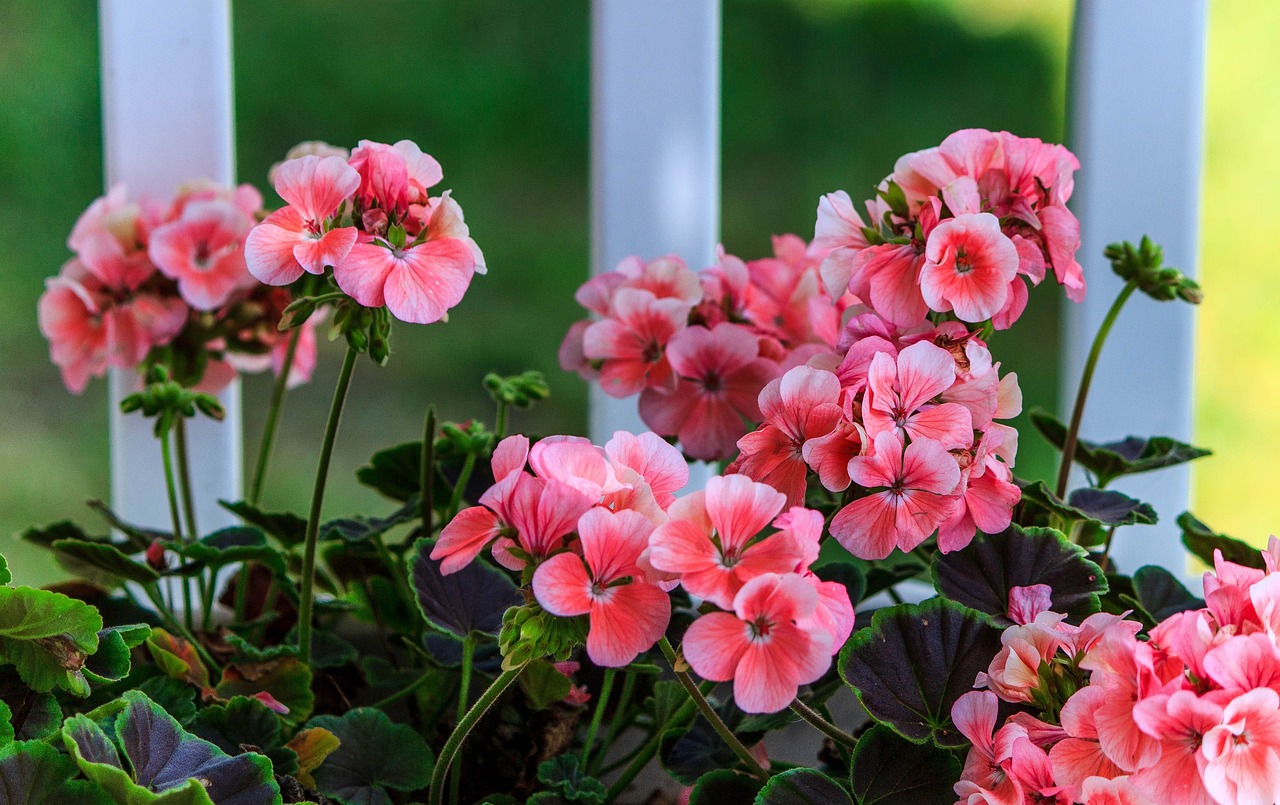Geraniums, with their vibrant blooms and aromatic foliage, are beloved by gardeners around the world. These hardy perennial plants are often grown in pots and flower beds, but many gardeners wonder if they can survive the harsh winter months outdoors. The answer to the question, “Can geraniums survive outside in winter?” is a bit nuanced and depends on several factors.
In this comprehensive guide, we’ll explore the various types of geraniums, their hardiness, and provide you with valuable tips on how to help your geraniums survive and thrive during the winter season. Whether you have zonal geraniums, ivy geraniums, or scented geraniums, we’ll cover the best practices for overwintering each type.
Understanding Geranium Types
Before we delve into the specifics of overwintering geraniums, it’s crucial to understand the different types of geraniums available to gardeners. The most common types include:
- Zonal Geraniums (Pelargonium × hortorum): Zonal geraniums are perhaps the most popular variety, known for their bright, colorful flowers and distinctive, dark-colored zones or patterns on their leaves. These geraniums are typically grown as annuals but can be overwintered with care.
- Ivy Geraniums (Pelargonium peltatum): Ivy geraniums are characterized by their trailing growth habit and glossy, ivy-like leaves. They produce a profusion of smaller, delicate flowers and are often used in hanging baskets and containers.
- Scented Geraniums (Pelargonium spp.): Scented geraniums are prized for their fragrant leaves, which emit delightful scents when touched or crushed. There are various scents available, including rose, lemon, mint, and more.
Each type of geranium has its own unique requirements for overwintering, so it’s essential to know which variety you have before proceeding.
Hardiness of Geraniums
Geraniums are native to regions with mild climates, and their hardiness varies depending on the type and cultivar. In general, geraniums are considered to be tender perennials, meaning they can’t withstand freezing temperatures for extended periods. However, with proper care and protection, you can help your geraniums survive the winter months.
Here’s a closer look at the hardiness of each type of geranium:
- Zonal Geraniums: These geraniums are relatively hardy and can tolerate light frosts, but they are not frost-resistant. They are typically grown as annuals in colder climates or overwintered indoors.
- Ivy Geraniums: Ivy geraniums are less cold-tolerant than zonal geraniums and can be damaged by even mild frosts. They are best suited for growing as annuals or overwintering indoors.
- Scented Geraniums: Scented geraniums are similar in hardiness to zonal geraniums. They can tolerate light frosts but are not suitable for prolonged exposure to freezing temperatures.
Now that you have a better understanding of the types of geraniums and their hardiness, let’s explore how to help your geraniums survive outside during the winter.
Overwintering Geraniums: General Guidelines
Overwintering geraniums involves providing them with the protection they need to survive the winter and thrive again in the spring. Here are some general guidelines to help you achieve this:
- Inspect Your Geraniums: Before the first frost, inspect your geranium plants for any signs of disease or pests. Remove dead or diseased foliage and treat any pest infestations. Healthy plants have a better chance of surviving the winter.
- Prune and Trim: Pruning your geraniums before overwintering them can help reduce their size and make them more manageable. Trim back leggy growth and dead or yellowing leaves.
- Gradual Acclimatization: If you plan to bring your geraniums indoors for the winter, start by gradually acclimating them to lower light conditions. Place them in a shadier spot for a week or two before bringing them indoors.
- Choose the Right Location: For overwintering indoors, select a cool, well-ventilated room with plenty of natural light, such as a sunroom or a south-facing window. Keep the temperature between 45°F and 50°F (7°C to 10°C) to promote dormancy.
Now, let’s delve into specific overwintering techniques for each type of geranium:
Overwintering Zonal Geraniums
Zonal geraniums are the hardiest of the geranium types, making them more amenable to overwintering outdoors in mild climates or even indoors. Here’s how to overwinter zonal geraniums successfully:
- Choose the Right Location: In regions with mild winters, zonal geraniums can often survive outdoors if provided with some protection. Choose a location that receives morning sun and is sheltered from harsh winds.
- Use Mulch: Apply a layer of mulch around the base of your zonal geraniums to insulate the roots and protect them from freezing temperatures. A 2-3 inch layer of mulch should suffice.
- Prune and Pot: If you live in an area with harsh winters, consider potting your zonal geraniums and bringing them indoors for the winter. Prune them back to about half their size to reduce stress on the plants.
- Water Sparingly: During the winter months, zonal geraniums require less water than during the growing season. Allow the soil to dry out slightly between waterings to prevent root rot.
- Provide Adequate Light: If you choose to overwinter zonal geraniums indoors, place them near a sunny window to ensure they receive sufficient light. You may also use grow lights to supplement natural light.
Overwintering Ivy Geraniums
Ivy geraniums are less cold-tolerant than zonal geraniums and typically require indoor overwintering in most climates. Follow these steps to successfully overwinter your ivy geraniums:
- Prune and Pot: Before the first frost, prune your ivy geraniums back by one-third to one-half of their size. This will reduce their size and make them more manageable for indoor growing. Repot them in fresh soil if necessary.
- Indoor Location: Find a bright spot indoors for your ivy geraniums. A south-facing window is ideal for providing them with adequate light. Keep the temperature between 45°F and 50°F (7°C to 10°C).
- Water Carefully: Ivy geraniums prefer to dry out slightly between waterings. Allow the soil to dry about an inch deep before watering. Be cautious not to overwater, as this can lead to root rot.
- Fertilize Sparingly: During the winter months, reduce fertilization to once every 4-6 weeks with a balanced, diluted liquid fertilizer.
- Check for Pests: Keep an eye out for pests, such as aphids and spider mites, which can be more problematic indoors. Treat any infestations promptly.
Overwintering Scented Geraniums
Scented geraniums, with their fragrant leaves, are prized for their aromatic qualities. While they are similar in hardiness to zonal geraniums, they can benefit from specific overwintering care to preserve their scents. Here’s how to overwinter scented geraniums successfully:
- Prune and Pot: Before the winter season begins, prune your scented geraniums to reduce their size and encourage bushy growth. Repot them if needed, using a well-draining potting mix.
- Indoor Location: Scented geraniums can be overwintered indoors, similar to zonal geraniums. Choose a bright, sunny window or use grow lights to ensure they receive enough light.
- Maintain Proper Humidity: Scented geraniums appreciate higher humidity levels. You can place a tray of water near the plants or use a humidifier to maintain adequate humidity.
- Watering Routine: Water your scented geraniums when the top inch of the soil feels dry to the touch. Avoid overwatering, as it can lead to root rot.
- Prune as Needed: Throughout the winter, continue to prune your scented geraniums to maintain their shape and encourage new growth. This will also help prevent leggy growth.
Overwintering Geraniums in Colder Climates
In regions with harsh winters and freezing temperatures, overwintering geraniums outdoors can be challenging. However, it is possible to help your geraniums survive the cold with some extra effort. Here’s how to do it:
- Dig Up Geraniums: Before the first frost, carefully dig up your geranium plants, taking care not to damage the roots. Shake off excess soil and inspect the plants for pests or disease.
- Pot or Hang: If you have the space, you can pot your geraniums in containers using fresh potting soil. Prune them back to a manageable size and place them in a cool, unheated garage or basement. Alternatively, you can hang them upside down in a cool, dark location, such as a cellar.
- Maintain Minimal Watering: While in their dormant state, geraniums require minimal water. Water sparingly, allowing the soil to dry out between waterings to prevent rot.
- Check for Pests: Regularly inspect your overwintered geraniums for signs of pests and treat any issues promptly to prevent infestations.
- Provide Adequate Ventilation: Ensure there is some ventilation in the storage area to prevent mold and maintain air circulation.
When spring arrives, around mid to late March, you can gradually reintroduce your geraniums to the outdoors. Place them in a sheltered spot to acclimate them to sunlight and warmer temperatures. Once the danger of frost has passed, you can transplant them back into your garden or containers.
Conclusion
The question, “Can geraniums survive outside in winter?” is a matter of understanding your specific geranium type, the climate in your region, and the steps you can take to help them endure the cold months. While geraniums may not be as hardy as some other perennial plants, with proper care and attention, you can successfully overwinter them.
Whether you choose to overwinter zonal geraniums, ivy geraniums, or scented geraniums, remember to adjust your care routine based on their specific needs. Regular pruning, careful watering, and pest management are essential aspects of overwintering geraniums. By following the guidelines provided in this article, you can enjoy the beauty and fragrance of your geraniums year after year, even in the face of winter’s chill.










